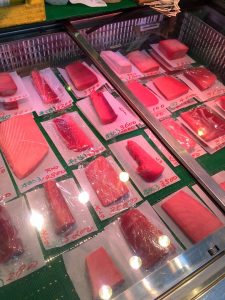
I am in Los Angeles at the moment.
On Monday, I was greeted by my Japanese sushi chef Toshi and he offered some food. It is still the best nigiri I have received to date.
When I met him in 2006, I only knew that he was Executive Sushi Chef with 32 years of experience.
He is a highly acclaimed sushi chef in LA. He has all the major movie companies in Hollywood as clients. Hollywood stars and celebrities are also some of the richest in the world. He was very happy that last night. He is pleased that things are going well in Denmark.

A little has happened since 2012 when I last visited the restaurant. Toshi is a Dodgers fan (8 best baseball teams). He makes sushi for them at certain times and their pictures are hanging in the sushi bar.
Tonight I’m going to be at the sushi bar where I’m going to give a badass sushi chef a hand.
Read more about Sushi chef and sake sommelier Zoë Escher
_
Zoë har afholdt sushikurser og japanske madkurser for A.P. Møller – Mærsk, Hugo Boss Nordic, Novo Nordisk, Novartis,Velux, Gorrissen Federspiel, Beierholm revision, Elbek & Vejrup og mange flere.








